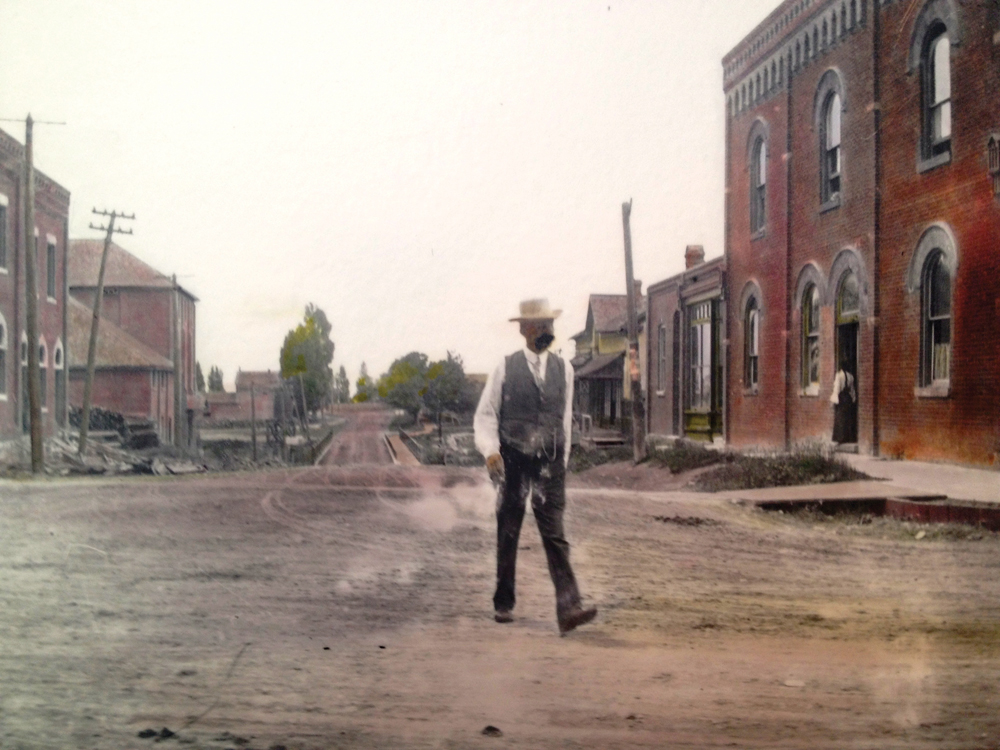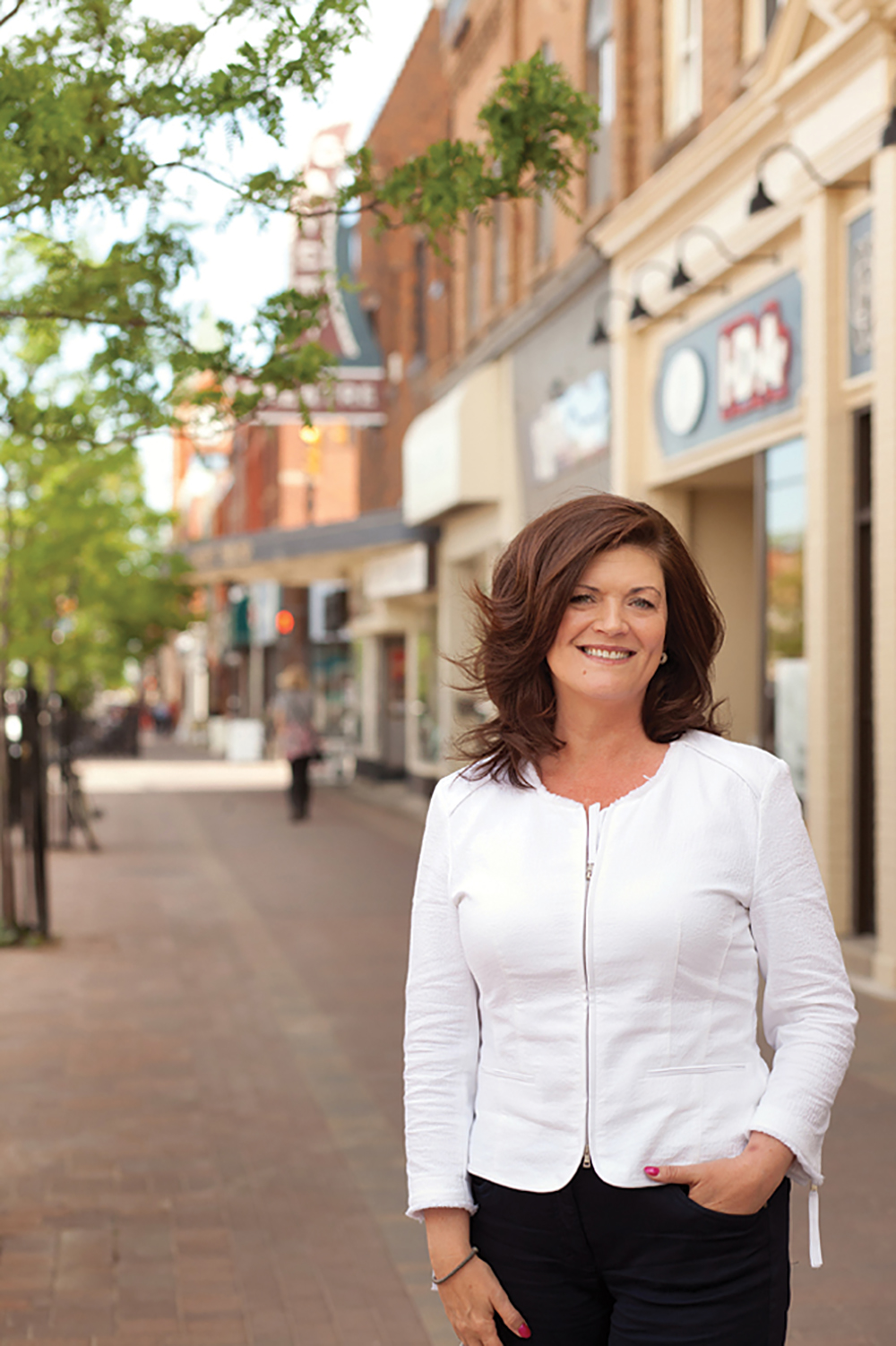For adventures beyond the pool, Georgian Bay presents an ocean of inspiration and opportunity.
by Carmen von Richthofen
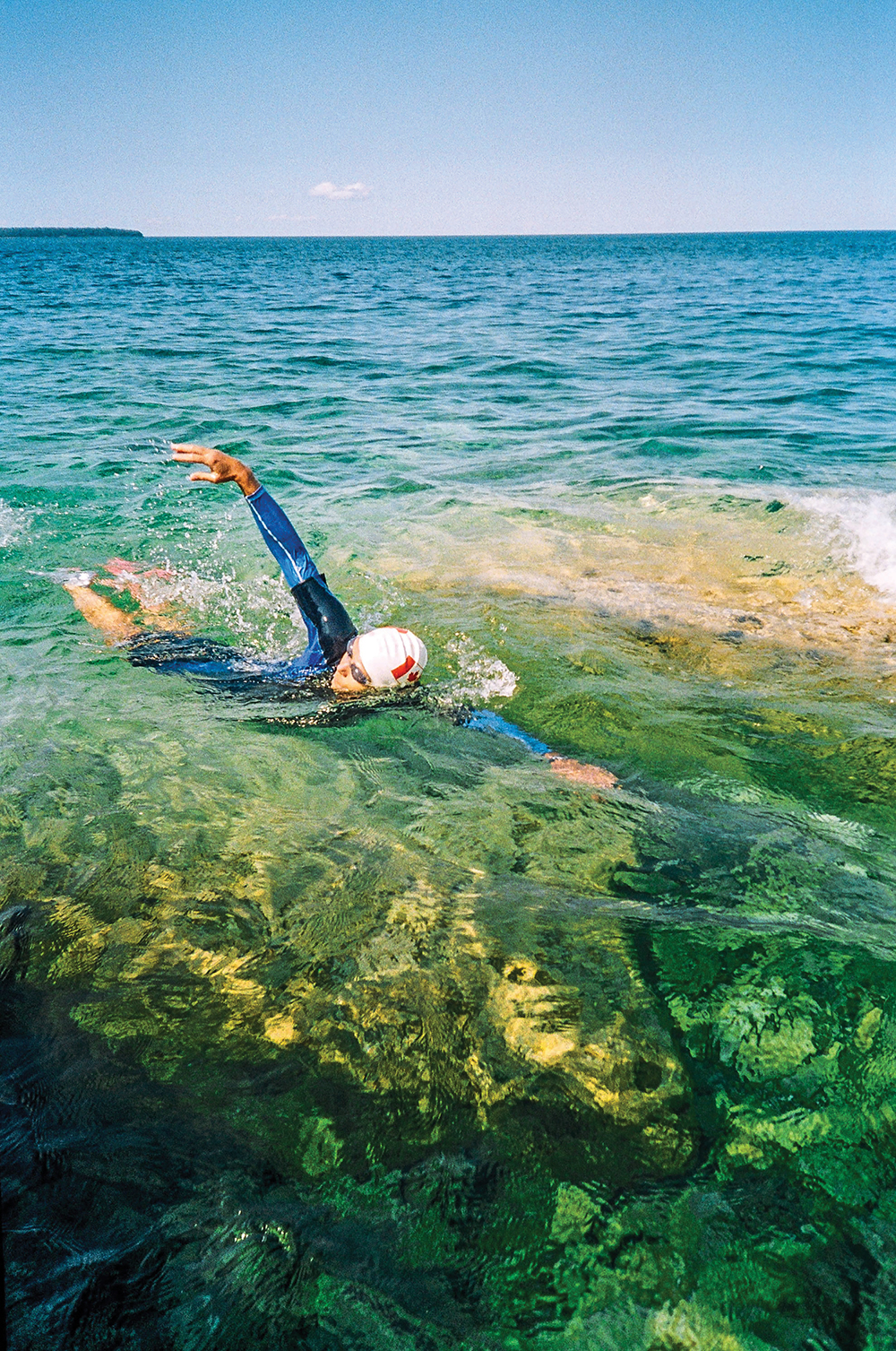
Get in, or get out!
That was our tongue-in-cheek Georgian Bay Extreme Aquatics motto, dismissing any reluctance to plunge into its often frigid—others may say, refreshing—waters.
Georgian Bay with its geologically diverse shorelines and many moods, ranging from a smooth-as-glass Caribbean turquoise-blue reverie to an angry slate-grey frothing maelstrom, is an irresistible draw for swimmers of all kinds—bathers, dippers, floaters, snorkelers, scuba divers, triathletes, fitness and long-distance swimmers, open water competitors, cold water warriors, ice swimmers.
Georgian Bay has everything an open water swimmer would want. The sandy expanse of Wasaga Beach, the longest freshwater beach in the world at 14 kilometres, embraces warm, shallow waters.
The fractured shale ledges of Craigleith’s shoreline provide a unique launchpad to deeper waters that protect submerged erratics in their final resting place—enormous rocks left behind as glaciers retreated. In Tobermory at the Big Tub Lighthouse, the white limestone walls of the shoreline make the water shimmer with icy crystal clarity. Swim a few feet away, you see the walls descend into deep green, progressively darker depths.
Open waters are mysterious—one day clear and flat, the next day darkly opaque, restless and spooky.
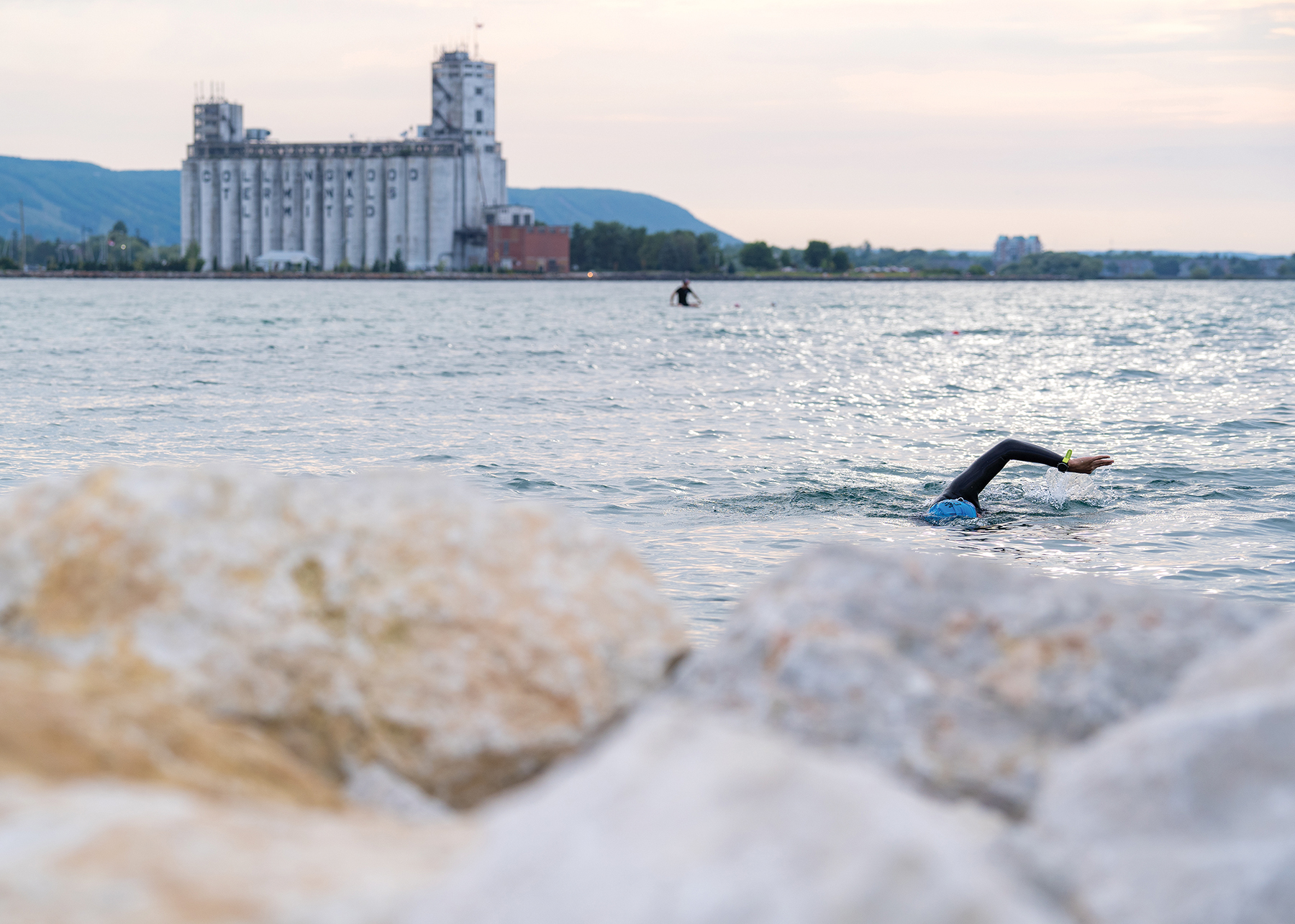
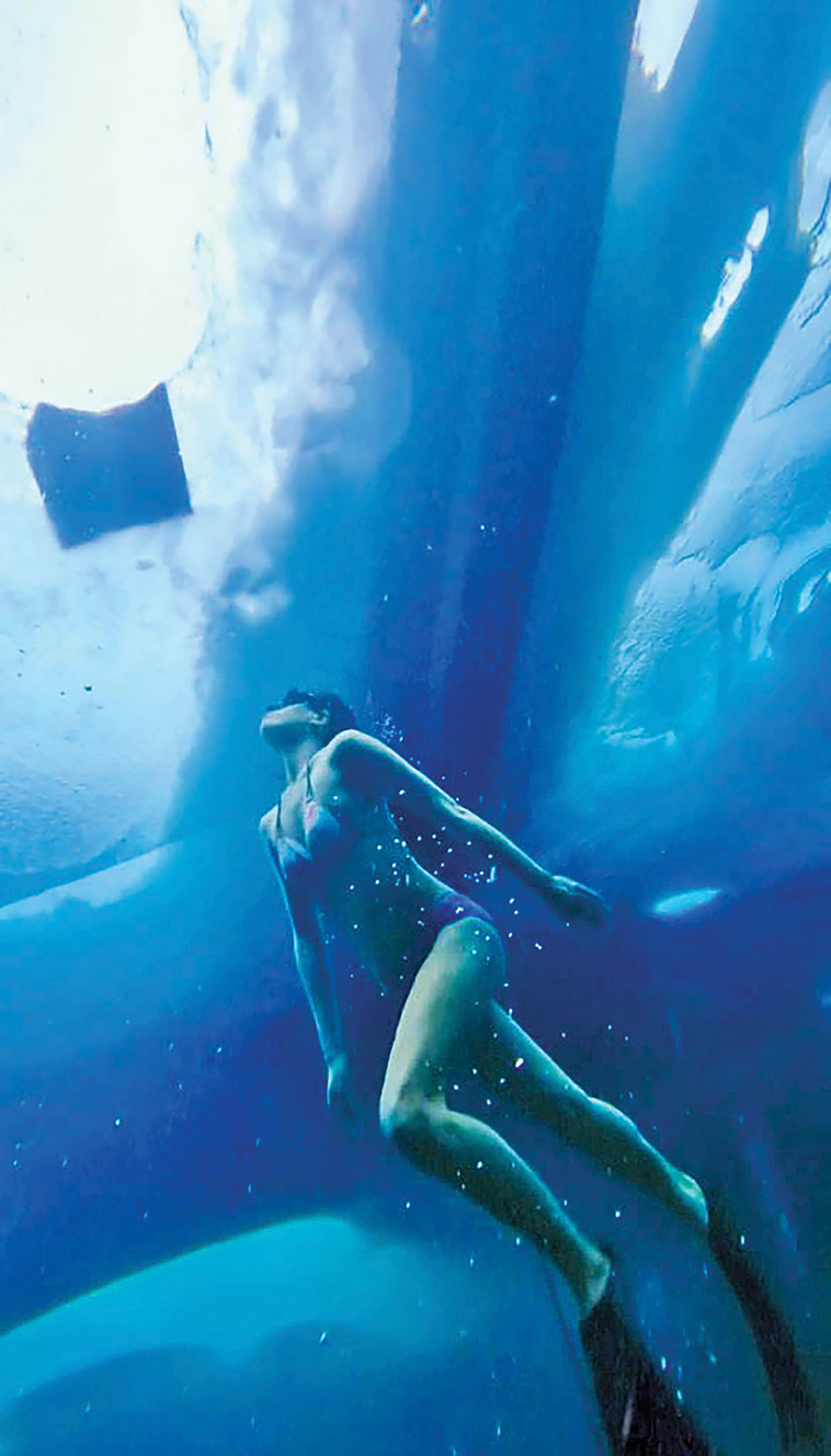
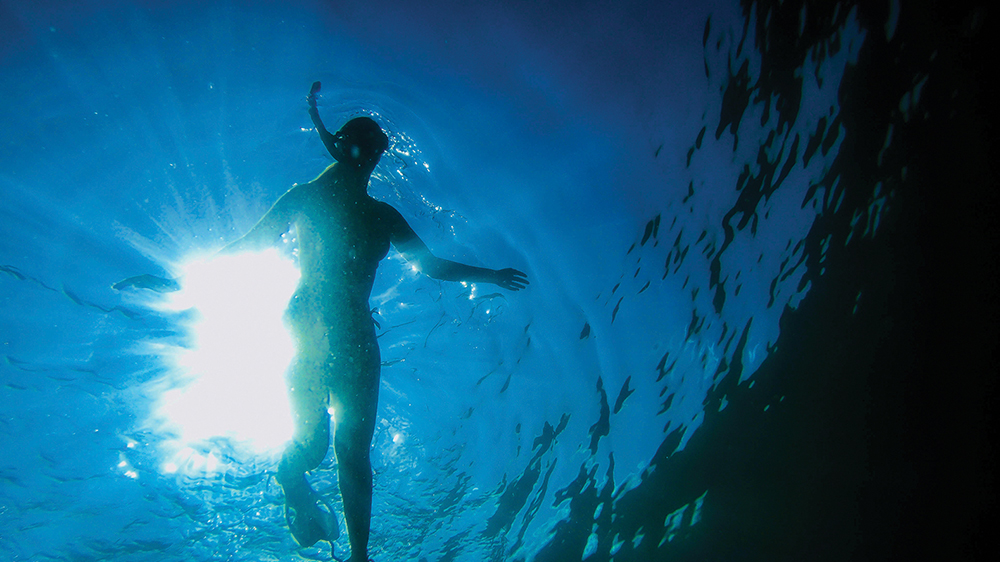
Bone-chilling extremes
A decade or two ago we were a self-proclaimed club of three or four, looking for out-of-the-way, magical blue-green swimming holes along the coast from Tobermory to Wasaga Beach. We fancied ourselves aqua-extreme, but there are people who actually fit the bill.
Take, for example, free divers Andrew and Lilly Ryzebol, who not only dive without scuba gear, but often do so without a wetsuit, exploring shipwrecks under solid Georgian Bay ice in the middle of the winter! (See their bone-chilling underwater exploits at AndrooprFreediving on YouTube.) But no-one should try this on the fly. Awe-inspiring and easy as this may look, both free diving and extreme cold water swimming require years of specialized training, fitness and risk management know-how.
This January, the Shoreline Beacon reported on 76-year-old Joan Barton from Wiarton taking her regular three-minute dip in Colpoys Bay. Water temperature on that day was three degrees with wind chill at minus 25 Celsius. The report included information about the Owen Sound (and area) Outdoor Swimmers Facebook group led by another open and cold water swimmer, Philly Markowitz.
Endurance endeavours
Twin brothers Jake and Josh Burella who tried to tame “the beast,” as they’ve described the Bay, with two epic endurance swims to raise funds in aid of youth mental health, certainly qualify as extreme swimmers. In 2018 they successfully swam 16 kilometres from Wasaga Beach to the grain terminals in Collingwood. In 2020 they tackled a gruelling 32-kilometre swim from Christian Island, again to the grain terminals. After 14 hours and 30 kilometres, “the beast” got the better of Josh’s physical strength. Once safely hauled into the accompanying boat, he cheered his brother on for the final 2,000 metres to the pier ladder.
At Sunset Point Park in Collingwood, neoprene-clad swimmers, pulling bright tow floats for greater visibility, will be churning out their extreme mileage from landmark A to landmark B, back and forth, perhaps training for at least two planned triathlons in the area this August: Multisport Canada Wasaga Beach Triathlon and the Owen Sound Subaru Series. This summer, Collingwood’s VO2 Sports, which runs a monthly triathlete training program, will provide extra outdoor swim coaching for their masters swim club, and also coordinate a free all-are-welcome swim meet-up on Saturday mornings, all at Sunset Point.
On August 28, Collingwood’s newly formed masters swim club, the Georgian Bay Squall, and Canaqua Sports will host the first Collingwood Terminals Open Water Swim, an event to raise funds and awareness for the water-protection charity Georgian Bay Forever.
The exhilaration of open water
Swimming pools are wonderful inventions. The water is always clean, clear and inviting. It’s usually warm. You can see the bottom, there are no waves. The aquatic space is well-defined, contained and finite. In public pools, there are lane ropes and black lines on the bottom to keep you on course. Lifeguards maintain a watchful eye. Everything is safe, orderly and predictable.
Open water swimming (and they call it wild swimming in the U.K.) is something completely different. Swimming in ponds, lakes, rivers and vast bodies of water such as Georgian Bay seems primal by comparison—exhilarating, pitting you directly against nature. The waters demand your respect, no matter how stunningly beautiful, calm and inviting they appear to be.
Open waters are mysterious—one day clear and flat, the next day darkly opaque, restless and spooky. Waves lash and crash to the tune of the wind. Currents test a swimmer’s mettle. The aquatic space is huge, undefined—in Georgian Bay you’re a speck in an immense inland sea. Creatures (we once found a big, blue crayfish!), huge brooding boulders and even shipwrecks lurk beneath the surface. When waters are finally at an agreeable temperature, they rudely hit you with random icy spots.
Considerations for the cautious
If you’ve always been a pool water rat, but want to swim in nature for a change, review important safety guidelines first. These include assessing weather forecasts, and water and air temperatures. Check the wind direction—if onshore, you may get huge waves for cavorting, but be wary of being bounced onto rocks. If the wind is offshore you risk being blown out into the watery yonder on your inflatable swan. Waves can carve troughs in sandy bottoms and create riptides. Be brutally honest about your fitness level, technique adaptability and swimming limitations. Know what’s in the water (boat traffic, windsurfers, kite boarders, weeds, rocks, critters). Acquire appropriate equipment (coloured swim cap, a tow float/swim buoy, reliable goggles, perhaps a wetsuit and fins). Recruit a swim buddy or join a group. Plan for post-swim comfort, especially when emerging from cold water (warm drink, snack, extra warm clothing).
As summer approaches, the teenagers of Collingwood don’t bother with any of that. They gather at the pier behind the grain terminals for a time-honoured ritual enacted by local youth at almost every harbour in the area: leaping into the still-icy Georgian Bay water. In anticipation of their voluntary shock immersion, the shrieks of exuberant daring pierce the clear, fresh air, heralding the start of an all-too-short summer of communion with the challenging waters of the magnificent Georgian Bay.

Get Waterproofed:
Mastering the basics.
The earliest depictions of what are thought to be swimmers doing front crawl (a.k.a freestyle), are the famous Neolithic rock paintings in the Cave of Swimmers located in the Sahara of southwest Egypt, dating back to some 8,000 years. Swimming was a basic survival skill in Neolithic times and still is in our digital age—necessary, life-preserving, life-saving. Every one of us must learn to swim, the sooner the better—at minimum so we know how to float on our backs to save ourselves. Tragically, every year people drown unnecessarily for lack of this fundamental life skill.
Statistics tell the sad tale. The latest available drowning report for Ontario (2020 edition, covering the years 2013-2017), prepared for the Lifesaving Society by the Drowning Prevention Research Centre Canada, tallied 1.2 water-related fatalities per 100,000 people, for a total of 172 deaths in 2017. Sixty-four percent of fatalities occurred in open waters (lakes, rivers and ponds) and in the months from May to September. Sixteen percent occurred in bathtubs, 12 percent in (usually private) pools—and one percent in lifeguard-supervised settings.
Drowning is the third leading cause of unintentional death in the world, and for children under five it is the second, according to the World Health Organization. Child Safe Canada warns that as little as half an inch of water anywhere is a drowning hazard.
Barbara Byers, Senior Research Officer of the Lifesaving Society Ontario, says, “Almost all drownings are preventable. What is very surprising is how quickly drowning can happen—in 10 to 15 seconds—and how silent it is.” When water fills the airway, you can’t speak, much less shout for help. She emphasizes that learning to swim (“immunization against drowning”), wearing life jackets and keeping children within arm’s length and watching them with unwavering laser-focus attention are the main things people can do to keep everyone safe around water.
Lifesaving Society
lifesavingsociety.com
Drowning Doesn’t Look Like Drowning
mariovittone.com/2010/05/154/
Georgian Bay beaches
southgeorgianbay.ca/georgian-bay-beaches/
Open water swimming
outdoorswimmer.com/open-water-safety
Cold water swimming
outdoorswimmer.com/blogs/6-tips-for-cold-water-swimming
Learn to swim
Meaford
meaford.ca/en/explore-play/swimming-lessons.aspx 519-538-3426
Collingwood
collingwood.ca/aquatic-programs 705-445-1030
Wasaga
ymcaofsimcoemuskoka.ca/swim-lessons 705-792-7822
In your own pool
aquamobileswim.com/about 1-888-950-7946









